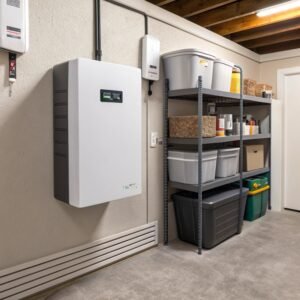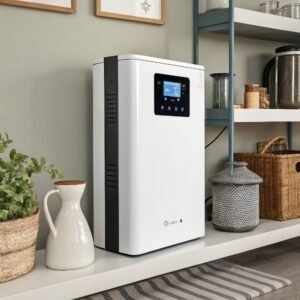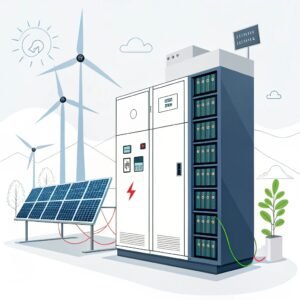What does a solar inverter do?
by
What does a solar inverter do?
You've installed solar panels to capture the sun's energy, but have you ever wondered how that raw power becomes usable electricity for your home? That's where the solar inverter - the brain of your solar system - comes into play.
A solar inverter converts the direct current (DC) electricity produced by solar panels into alternating current (AC) electricity that powers your home appliances and can be fed back into the grid.
How many solar panels can an inverter handle?
When designing your solar system, matching your inverter capacity to your panel array is crucial for optimal performance. Get this wrong and you could be leaving money on the table.
Most residential inverters can handle 10-20 solar panels, depending on their wattage. The key is matching the inverter's maximum DC input to your panels' combined output.
Calculating inverter capacity:
- Determine panel wattage: Typical panels are 300-400W each
- Calculate total array output: Number of panels × wattage
- Match inverter specs: Choose an inverter with equal or greater DC input rating
Example calculation:
- 15 × 350W panels = 5,250W total
- Select a 5kW or 6kW inverter
Pro Tip: Always leave 10-15% headroom to account for panel degradation over time and occasional peak production.
Do solar inverters need maintenance?
Unlike your solar panels which are largely maintenance-free, inverters do require some occasional attention to keep them running smoothly.
Solar inverters need minimal maintenance but benefit from annual inspections, cleaning of vents/fans, and monitoring performance data for early fault detection.
Inverter maintenance checklist:
| Task | Frequency | Importance |
|---|---|---|
| Visual inspection | Monthly | High - check for warning lights |
| Vent cleaning | 6 months | Medium - prevents overheating |
| Performance review | Quarterly | High - identify output drops |
| Professional service | 2-3 years | Medium - internal components |
Warning Signs:
- Unusual noises (fan issues)
- Error messages on display
- Sudden drops in production
- Physical damage or corrosion
How long will a solar inverter last?
While solar panels can last 25+ years, inverters have a shorter lifespan that you'll need to factor into your solar investment calculations.
Most solar inverters last 10-15 years. Microinverters may last longer (15-25 years) as they don't handle the full system load like central inverters do.
Factors affecting inverter lifespan:
-
Type of inverter:
- Central inverters: 10-12 years
- String inverters: 10-15 years
- Microinverters: 15-25 years
-
Environmental conditions:
- Temperature extremes reduce lifespan
- Humidity and salt air cause corrosion
- Dust/debris accumulation causes overheating
-
Usage patterns:
- Systems running at full capacity age faster
- Frequent power surges/storms take a toll
Cost Consideration: Budget for inverter replacement every 10-15 years to maintain peak system performance.
Conclusion
Your solar inverter plays the critical role of converting and optimizing your solar energy. Proper sizing, basic maintenance, and understanding its lifespan will ensure you get the most from your solar investment for years to come.




